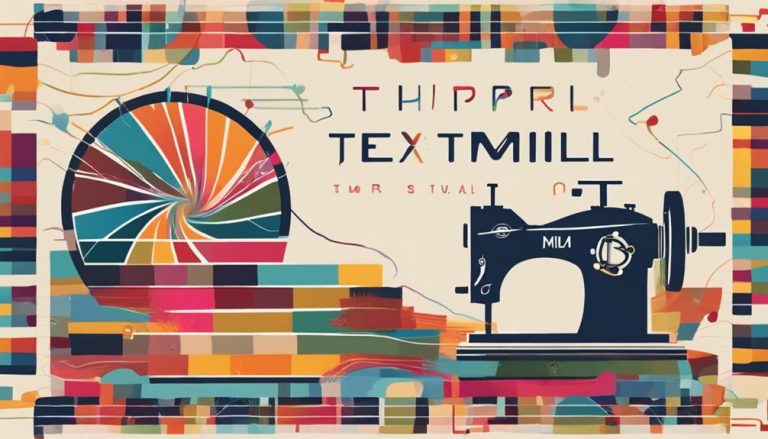Email Marketing Campaigns for Holiday Promotions
As you start planning your holiday email marketing campaigns, you're likely wondering how to make the most of this critical sales period. You know that a well-executed campaign can drive significant revenue and boost brand loyalty, but where do you start? By understanding your audience's preferences and behaviors, you can create targeted campaigns that resonate with them. But what specific strategies will help you stand out in a crowded inbox? What common pitfalls should you avoid? Let's take a closer look at the key elements of a successful holiday email marketing campaign and explore how you can maximize your ROI.
Key Takeaways
- Develop an email marketing strategy that starts in mid-summer to capitalize on holiday consumer spending habits.
- Create personalized content that resonates with target audience preferences, behaviors, and pain points during the holiday season.
- Segment email lists to deliver targeted promotions and offers based on demographics, purchase history, and engagement.
- Craft festive and eye-catching email templates that evoke the holiday spirit and mirror the brand's identity.
Planning Your Holiday Email Strategy
When planning your holiday email strategy, consider starting as early as mid-summer to develop an exhaustive approach that capitalizes on consumer spending habits during the holiday season. This allows you to set a realistic holiday budget and allocate resources effectively.
Start by reviewing last year's holiday email performance to identify areas for improvement and opportunities for growth.
Create a thorough email calendar that outlines your entire holiday email strategy, including key dates, promotions, and deadlines. This will help you stay organized and guarantee that your emails are sent on time.
Be sure to include a mix of promotional, educational, and transactional emails to keep your subscribers engaged throughout the holiday season.
With a solid plan in place, you can focus on creating compelling content that drives conversions. Remember to regularly review and adjust your holiday budget to verify you're on track to meet your goals.
Crafting Compelling Holiday Email Content
To craft compelling holiday email content that drives conversions, you'll need to develop a deep understanding of your target audience's preferences, behaviors, and pain points during the holiday season.
This understanding will enable you to create content that resonates with your audience and sets you apart from competitors.
As you develop your holiday email content, consider the following strategies:
Infuse your content with holiday cheer by incorporating seasonal sentiments, imagery, and messaging that evokes a sense of joy and giving.
Highlight limited-time offers, exclusive deals, or special bundles that cater to your audience's preferences and create a sense of urgency.
Emphasize the value and convenience of your products or services, particularly those that address common pain points or make great gifts.
Segmenting Your Email List Effectively
Now that you've crafted compelling holiday email content, it's time to guarantee it reaches the right people by segmenting your email list effectively, which involves dividing your subscribers into targeted groups based on their unique characteristics, behaviors, and preferences. Effective segmentation strategies can dramatically boost the performance of your email campaigns.
| Segmentation Criteria | Description |
|---|---|
| Demographics | Segment by age, location, job title, or industry |
| Purchase History | Segment by previous purchases, order frequency, or total spend |
| Engagement | Segment by email open rates, click-through rates, or time since last engagement |
| Preferences | Segment by interests, survey responses, or stated preferences |
To certify the success of your segmentation efforts, maintain good list hygiene by regularly cleaning and updating your email list. Remove inactive or unengaged subscribers to prevent harming your sender reputation. By applying these segmentation strategies and maintaining a healthy email list, you'll be able to deliver personalized and relevant content to your subscribers, increasing the likelihood of conversion and driving revenue for your business.
Designing Festive Email Templates
You're more likely to grab the attention of your email subscribers during the holiday season if you craft a festive and eye-catching template that resonates with their holiday spirit and mirrors your brand's identity.
A well-designed template can make or break your holiday email marketing campaign, so it's vital to get it right.
To create a template that stands out, consider the following elements:
Holiday branding: Incorporate your brand's holiday-themed logo, color scheme, and typography to create a cohesive look and feel that's instantly recognizable.
Visual storytelling: Use high-quality images or graphics that evoke the emotions and nostalgia of the holiday season, such as snowflakes, holly, or festive lights.
Simple and clean design: Avoid clutter and keep your template simple, clean, and easy to navigate, ensuring that your message and call-to-action (CTA) are clear and prominent.
Timing Your Email Campaigns Perfectly
To execute a successful email marketing campaign, you'll want to focus on strategic timing.
This involves planning ahead of major holidays and events, making adjustments mid-campaign to optimize results, and analyzing the outcomes after the campaign concludes.
Pre-Holiday Season Planning
By mapping out your email marketing campaigns well in advance of the holiday season, you can capitalize on the increased consumer spending that typically occurs during this time of year. A well-planned email marketing strategy will help you stand out in a crowded inbox and maximize your ROI.
When planning your email marketing campaigns for the holiday season, making certain to allocate your budget effectively and create a marketing calendar to keep track of your campaigns is crucial.
Identify your target audience and tailor your messaging and offers to their interests and preferences
Create a budget allocation plan to guarantee you have sufficient resources to execute your campaigns
Develop a marketing calendar to keep track of your email sends, social media posts, and other promotional activities
Mid-Campaign Adjustments Needed
As your email marketing campaigns unfold, it's vital to continuously monitor their performance and make mid-campaign adjustments to optimize their timing and maximize their effect. This is where campaign optimization comes into play. By analyzing your campaign's performance, you can identify areas that need improvement and make data-driven decisions to adjust your strategy.
| Metric | Adjustment |
|---|---|
| Open rates are low | Try a new subject line or sender name |
| Click-through rates are low | Optimize your email content and CTAs |
| Conversion rates are low | Refine your targeting and segmentation |
| Unsubscribes are high | Review your email frequency and content relevance |
Making mid-course corrections can substantially impact your campaign's success. By being proactive and flexible, you can guarantee your email marketing campaigns stay on track and achieve their intended goals. Remember, campaign optimization is an ongoing process that requires continuous monitoring and improvement. By staying vigilant and making adjustments as needed, you can maximize your campaign's impact and drive better results.
Post-Holiday Analysis Report
With your email marketing campaigns optimized and on track, it's time to analyze their performance during peak periods, such as holidays, to identify opportunities for improvement and inform future campaign timing strategies.
This post-holiday analysis report will help you gain valuable insights into what worked and what didn't, allowing you to refine your approach for the next holiday season.
To get the most out of your analysis, consider the following key areas:
Open rates and engagement: Which subject lines and email content resonated with your audience? Were there any notable trends or patterns with regard to open rates, clicks, and conversions?
Conversion rates and revenue: Which campaigns drove the most revenue, and what factors contributed to their success? Were there any opportunities for improvement with respect to offer, timing, or targeting?
Unsubscribes and complaints: Were there any common themes or triggers that led to unsubscribes or complaints? What can you do to mitigate these issues in future campaigns?
Personalizing Holiday Email Messages
When crafting holiday email messages, you'll want to tailor your content to resonate with each recipient, taking into account their purchase history, browsing behavior, and demographic data to create a personalized experience that drives engagement and conversions.
This approach will help you stand out from generic, mass emails and foster a deeper connection with your audience.
To personalize your holiday emails, start by segmenting your list based on relevant criteria, such as location, interests, or past purchases.
Then, use this information to craft targeted messages that speak directly to each group.
For example, you could send a 'Holiday Wishes' email to subscribers in colder climates, featuring cozy winter products, while sending a 'Seasonal Greetings' email to those in warmer climates, highlighting outdoor gear.
Measuring Email Campaign Success
When you launch an email marketing campaign, it's vital to track its performance to understand what's working and what's not.
You'll want to analyze your open rate to see if your subject lines and sender names are resonating with your audience.
Open Rate Analysis
Measuring the success of your email campaign starts with tracking open rates, as it gives you insight into whether your subject lines, sender names, and email previews are effectively enticing recipients to open your messages. This metric is vital in determining the effectiveness of your email marketing strategy.
By analyzing open rates, you can identify areas for improvement and make data-driven decisions to optimize your campaigns.
To get the most out of your open rate analysis, consider the following:
Compare to email benchmarks: Evaluate your open rates against industry averages to determine if your campaigns are performing well. This will help you identify areas for improvement and set realistic goals.
Analyze subject lines: Test different subject lines to see which ones resonate with your audience. This will help you craft subject lines that grab attention and entice recipients to open your emails.
Optimize sender names and email previews: Verify that your sender names and email previews are clear, concise, and relevant to the content of your email. This will help build trust with your audience and increase the likelihood of opens.
Conversion Rate Metrics
With a clear understanding of open rates, you can now shift your focus to the ultimate goal of your email campaigns: driving conversions.
Conversion rate metrics are vital in measuring the success of your email campaigns. You need to track the percentage of subscribers who complete a desired action, such as making a purchase, filling out a form, or clicking on a link.
To evaluate your conversion rates effectively, establish conversion benchmarks for your industry and campaign type. This will help you gauge your performance and identify areas for improvement.
To optimize your conversion rates, consider A/B testing different elements of your email campaigns, such as subject lines, CTAs, and email copy. Analyze the results to determine which variations drive more conversions.
Additionally, segment your email list to target specific groups with tailored content and offers. By doing so, you'll increase the likelihood of conversion.
Avoiding Common Email Mistakes
To execute a successful email marketing campaign, you'll want to steer clear of common pitfalls that can tank your efforts and alienate your subscribers.
One major mistake is failing to segment your email list, leading to irrelevant content that fuels email fatigue and subscriber frustration. When subscribers receive too many emails that don't resonate with them, they're more likely to opt-out or mark your messages as spam.
To avoid these common email mistakes, keep the following strategies in mind:
Don't overdo it: Space out your emails to avoid overwhelming your subscribers with too many messages at once.
Personalize your content: Use data and analytics to tailor your emails to specific segments of your audience.
Make it easy to unsubscribe: Clearly provide an unsubscribe link in every email to prevent subscribers from marking your messages as spam.
Post-Holiday Email Follow-Up Tactics
After avoiding common email mistakes, you're now poised to capitalize on the momentum from your holiday campaigns by implementing strategic post-holiday email follow-up tactics that re-engage your audience and drive continued sales.
A well-planned follow-up strategy can help you win back inactive customers and strengthen customer loyalty.
To achieve this, consider sending a series of targeted emails that cater to different segments of your audience.
For instance, you can send a 'thank you' email to customers who made a purchase during the holiday season, offering them exclusive discounts or loyalty rewards.
For inactive customers, you can implement a win-back strategy by sending personalized emails that highlight new products or services, or offering limited-time promotions to re-engage them.
Analyze your email metrics to identify which tactics are working and adjust your strategy accordingly.
By implementing a strategic post-holiday email follow-up plan, you can extend the lifespan of your holiday campaigns, drive continued sales, and foster long-term customer loyalty.
Frequently Asked Questions
Can I Use Holiday Email Templates for Non-Holiday Campaigns?
You can repurpose holiday email templates for non-holiday campaigns by adapting them to your year-round branding. This approach offers seasonal flexibility, allowing you to breathe new life into existing designs and maintain a consistent brand voice.
How Do I Handle Email Unsubscribes During Holiday Season?
You should take opt out analysis seriously, as unsubscribes reveal preferences. Implement unsubscribe segmentation to refine targeting. Analyze reasons for unsubscribes and adjust your content to better engage subscribers and reduce future opt-outs effectively.
Are Holiday-Themed Subject Lines More Effective?
You're wondering if holiday-themed subject lines are more effective. Research shows that incorporating the holiday spirit and festive phrases can boost open rates. You'll likely see better engagement when using seasonal keywords that evoke emotions and urgency.
Can I Send Holiday Emails to Inactive Subscribers?
You're considering re-engaging inactive subscribers, but first, analyze your dormant list to identify reasons for inactivity. Develop targeted re-engagement strategies to win them back, rather than simply sending holiday emails that might fall flat.
Do Holiday Email Campaigns Work for B2B Businesses?
When it comes to B2B marketing, you might think holiday campaigns are off-limits, but they can be effective if done strategically. Look for seasonal relevance to your industry, like a year-end review or new year planning.
Conclusion
As you gear up for your holiday email marketing campaign, keep your goals, target audience, and budget top of mind.
Use the insights you've gathered from last year's performance and the strategies outlined above to drive conversions, boost revenue, and strengthen customer relationships.
A well-executed email marketing plan will put your business in the best position to thrive during the competitive holiday season and build long-term customer loyalty.







